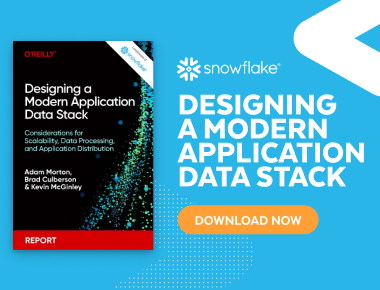Best Practices for Building Database Applications
In today's data-driven world, database applications play an essential role in business strategy. Companies are maximizing value by building apps that connect customers and partners to the valuable data they need to reduce risk, improve efficiency, boost profitability, provide better customer experiences, and more. Modern cloud platforms provide companies with powerful tools for streamlining app development. In this article, we’ll explore best practices for building database applications that are secure, scalable, and efficient. We’ll highlight the latest cloud-based technologies and the role they play in the development of modern database applications.
What Is a Database Application?
A database application is a software program designed to connect to and interact with a data store to perform a specific task or function. Database applications are used across a variety of industries, including healthcare, manufacturing, financial services, retail, and advertising. As the scale and diversity of data continue to grow, modern database applications have become increasingly useful tools. From predicting how emerging consumer trends are likely to impact a retailer’s marketing strategy to determining how a labor strike in an emerging economy will impact a manufacturer’s supply chain, database applications enable smarter business.
Best Practices for Building Database Applications
Building high-performing database applications can be challenging, but modern cloud platforms such as Snowflake make it simpler. Let’s look at three best practices that these platforms enable.
Ensure scalability for future growth
Because workloads aren’t predictable and lag creates frustrated users, you need the ability to instantly and infinitely scale compute up, down, and out to any and all workloads without impacting performance. Unfortunately, most open-source solutions don’t scale automatically, which puts the burden solely on your team. Choose a platform that automates much of the work for you so your team can focus on product development, customer support, and other high-value tasks.
Build in extensibility from the start
Customer needs evolve over time. For your application to keep up, you need a data stack that can adjust to customer requirements without re-architecting. When choosing your stack, prioritize extensibility/programmability to prevent wasted resources.
Build on a robust architecture
Many organizations are deploying a multi-cloud architecture for high availability and better resilience. But to make this work, the architecture running underneath your app must provide a single code base across providers. Choose one that’s designed for multi-cloud compatibility.
Core Capabilities for Database Applications Development
Modern database applications require a data infrastructure to support them. Building on a reliable and efficient data platform is crucial for success. A high-performing platform provides the foundational technology that enables high-performance applications and results in satisfied users. Here are six core capabilities of a cloud platform that will help developers build robust, scalable, and secure applications.
Limitless scalability
Modern cloud platforms separate compute and storage. This makes it possible to independently scale each component. Scalability should be automatic and without limits, with apps free to instantly and infinitely scale compute up, down, and out to accommodate any and all workloads without impacting performance.
Data concurrency
Concurrency provides all users with a single copy of the data. Since each user has their own dedicated and independent compute resources, contention becomes less of an issue. Data can be used by multiple users simultaneously through multiple compute clusters, eliminating slowdowns and disruptions.
Instant elasticity
Resource provisioning should be immediate, allowing users to dynamically match their resources to usage demands, independent of data volume. On-demand elasticity provides high performance when and where it's needed.
Support for rich data
Due to the variety of data sources most applications must work with, an integrated approach is essential for handling relational data, unstructured data, and semi-structured data such as JSON, Avro, Parquet, and XML.
Fully managed service
A data stack offered as-a-service frees companies to focus on product development rather than dedicating resources to maintaining the infrastructure that supports it. With a fully managed service, there’s no infrastructure to manage or optimize, and there is no downtime for software updates.
Robust security and governance
An always-on secure data environment with the option of operating in virtual private clouds (VPC) for added protection is a must-have for any modern data stack. As part of a fully managed service, there’s no customer configuration or ongoing management required. In addition, modern data platforms such as Snowflake have built-in features that ensure the highest levels of governance for your account and users, including all the data you store and access within the platform.
Database Applications Development with Snowflake
Snowflake is designed for development. With a data architecture that seamlessly scales with the user base, more database application developers are choosing to build their apps on Snowflake. Snowflake offers virtually limitless concurrency, automatically scaling compute resource availability without impacting performance or having to reshuffle data. Snowflake quickens the pace of innovation, making it easier for developers to build, test, and deploy their data-intensive applications.
